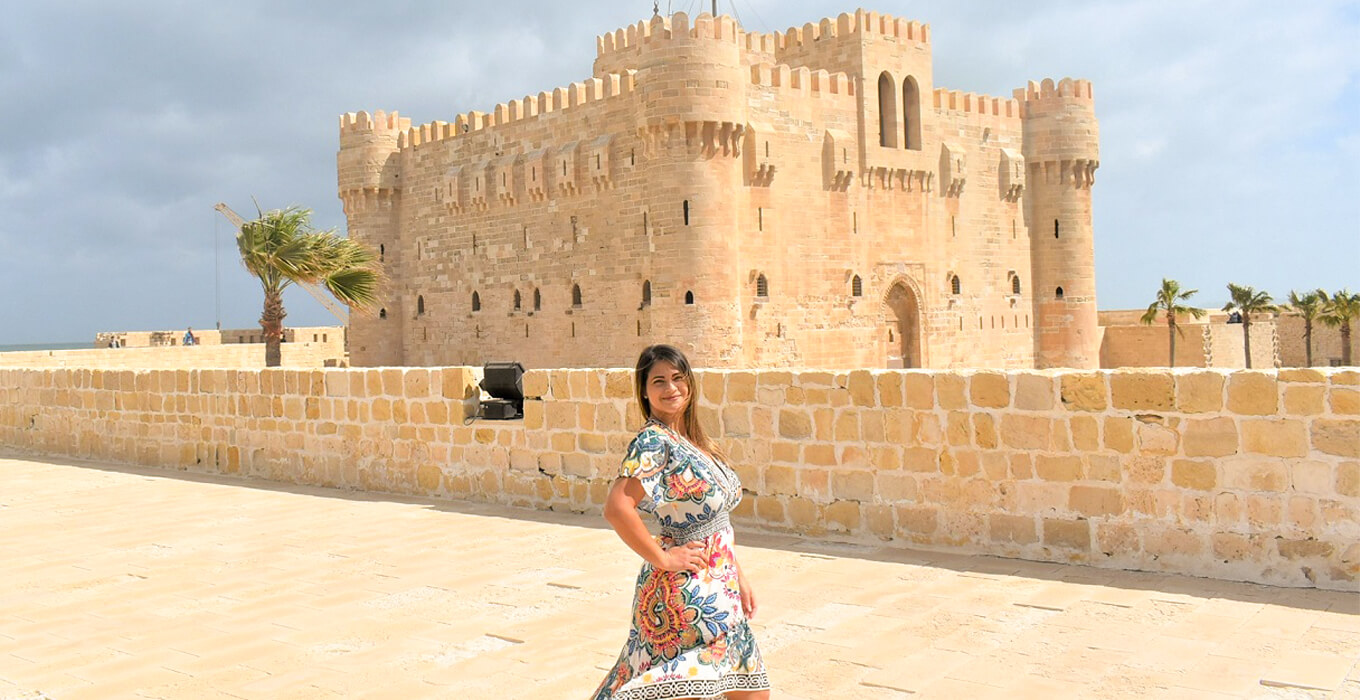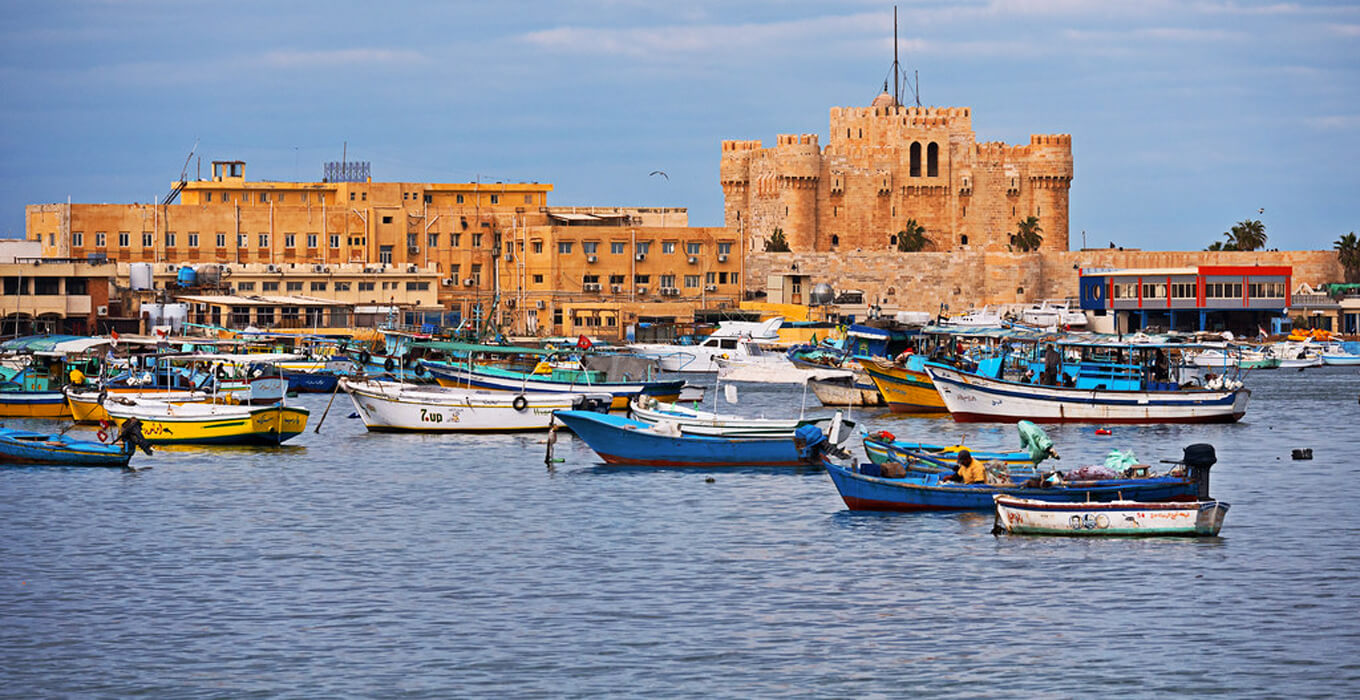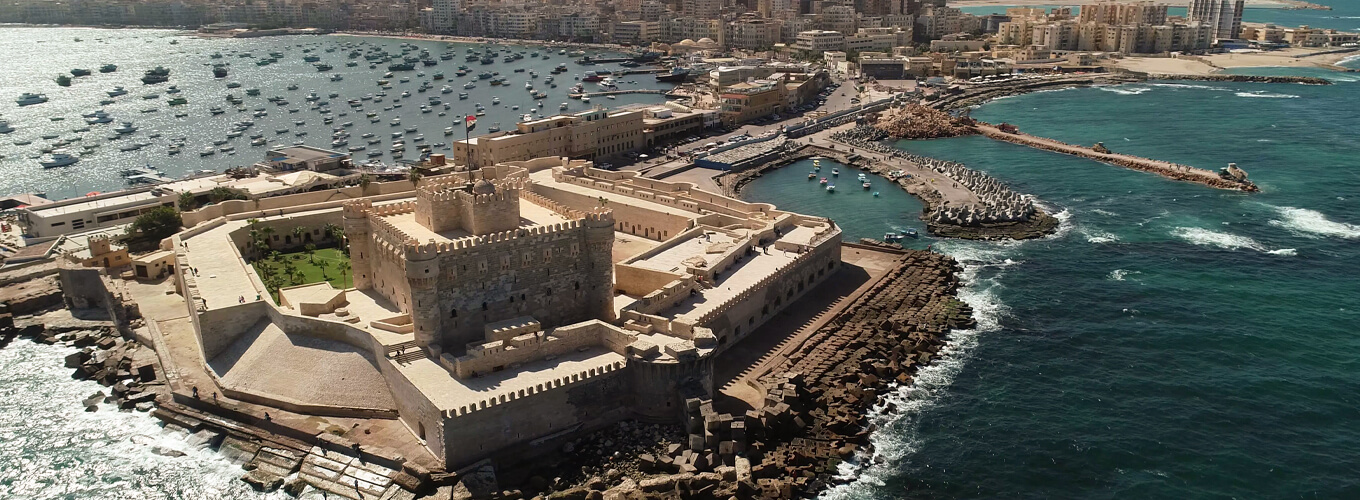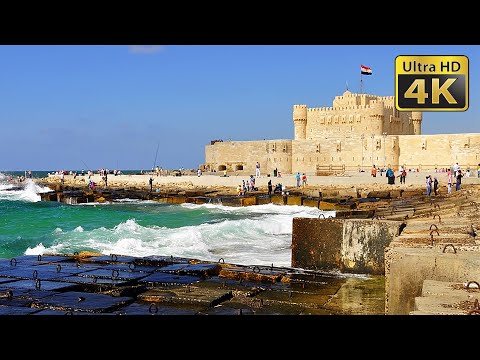Along the beautiful Mediterranean coast of Alexandria, Egypt, lies a historic wonder from the 15th century – the fort qaitbay alexandria egypt. Built by Mamluk Sultan Al-Ashraf Sayf al-Din Qa’it Bay in 1477-1479 AD, it shows the area’s deep history and military strength. For over 540 years, it has stood as a symbol of the region.
The fort qaitbay alexandria egypt, also called the Fort of Qaitbay, shines as a masterpiece of Islamic military architecture. It’s a key part of Alexandria’s defenses. Located at the northern tip of Pharos Island, it guards the Eastern Harbor’s entrance. It was built to protect against sea threats.
Key Takeaways
- The fort qaitbay alexandria egypt is a 15th-century defensive fortress in Alexandria, Egypt, built by Mamluk Sultan Al-Ashraf Sayf al-Din Qa’it Bay.
- It’s on the eastern side of Pharos Island’s northern tip, at the Eastern Harbour’s mouth. It was a key part of Alexandria’s defenses.
- This Citadel is a vital defensive spot along the Mediterranean and in Egypt. It played a key role in the 1517 Ottoman siege of Alexandria.
- It has a rich history, used by Ottoman Turks, French troops, and the British as a military base and prison until 1954.
- Restorations in 1805 and 1984 helped keep this important historical site safe for the future.
Introduction to fort qaitbay alexandria egypt
Location and History
The Qaitbay Citadel is a 15th-century fortress by the Mediterranean Sea in Alexandria, Egypt. It was built from 1477 to 1479. This structure replaced the old Lighthouse of Alexandria, one of the Seven Wonders of the Ancient World. It’s on Pharos Island, protecting the Eastern Harbour.
Sultan Al-Ashraf Sayf al-Din Qa’it Bay, a famous Circassian Mamluke Sultan, ordered its construction. He ruled Egypt from 1468 to 1496. He wanted to defend against the Ottoman threat with this defensive fortress. The Citadel helped fight off Ottoman attacks in 1517 and 1543, proving its importance through the ages.
“The Citadel of Qaitbay has been standing for over 500 years since its construction started in 1477.”
Now, the Qaitbay Citadel shows off the Mamluk Era’s architecture and strength. It’s a UNESCO World Heritage Site since 1979. Visitors from all over come to see its beauty and learn about Alexandria’s history and the sea’s role.

The Architecture of fort qaitbay alexandria egypt
The Citadel of Qaitbay in Alexandria, Egypt, is a key example of Islamic military architecture. It was built in 1479 and has lasted over 500 years. It combines traditional Islamic and European styles.
This fortress was made with limestone blocks. It covers about 17,550 square meters. It has an outer wall and an inner wall with a central courtyard.
The main tower is a big three-story square fort with towers at each corner. The towers have balconies for defense. The citadel also has crenellations, a sign of Islamic military buildings.
The courtyard has rooms for soldiers. This shows the citadel was made to be a strong military place. It was built to protect Alexandria from attacks.
Over time, the Qaitbay Citadel was important for defending the area. It was used by different rulers, from the Mamelukes to the Ottomans. Napoleon even started his Egyptian campaign from here.
Now, the Qaitbay Citadel shows the smart use of Islamic military architecture. It mixes defense, looks, and smart design. This makes it a unique and lasting structure.
Citadel of Qaitbay in Alexandria Egypt
Strategic Location and Defense
The Citadel of Qaitbay is in Alexandria, Egypt, by the Mediterranean coast. It was built where the ancient Pharos Lighthouse once stood. This spot is key for defending the city’s eastern harbor during the Mamluk times.
The citadel was made to fight off sea attacks. It has high walls, towers, cannons, and weapons. These helped protect against Ottoman threats. It beat the forces of Selim I in 1517 and Suleiman I in 1543, proving its strength.
It sits on Pharos Island, using Mamluk military architecture. This made it a key part of the city’s coastal defense. It kept the eastern harbor safe from Ottoman invasion.
“The Citadel of Qaitbay was a testament to the Mamluk’s military prowess and their determination to safeguard the city of Alexandria from external threats.”
The citadel was crucial against the Ottoman Empire’s growth. As the Ottomans got weaker, the citadel’s role changed. Yet, it remains a symbol of Alexandria’s coastal defense today.
Exploring the Citadel’s Interior
Step inside the Qaitbay Citadel in Alexandria, Egypt, and travel back in time. This 15th-century fortress shows off a mix of Islamic and European styles. It gives us a peek into the Mamluk era.
At the heart of the citadel is a stunning mosque. It has beautiful carvings, arches, and vaults. These features show off the Mamluk style. Near the mosque, there are barracks for the Mamluk soldiers and storehouses for supplies.
Deeper in the citadel, you’ll find where the Mamluk commanders and their families lived. These quarters show the same care in design as the rest of the citadel. They also have a cozy feel.
While walking through, look at the detailed inscriptions and carvings on the walls. They make the citadel look beautiful and tell us about its history and culture.
If you love history, architecture, or just want a unique experience, the Qaitbay Citadel won’t disappoint. It’s full of amazing architecture and history from the Mamluk era. This place will leave you amazed.
The Restoration of the fort qaitbay alexandria egypt
The Citadel of Qaitbay is a 15th-century fortress in Alexandria, Egypt. It has been carefully restored over the years. This keeps its historical value and looks great. The latest restoration was from 2009 to 2019. It made sure this UNESCO World Heritage Site stays loved by people for a long time.
For 10 years, experts worked hard on the Citadel. They checked its condition and fixed many things. They fixed walls, put back missing stones, and restored the Citadel’s detailed masonry and decorations.
Preserving a Historical Landmark
Fixing the Citadel’s structure was key. Engineers fixed damage from erosion and other forces. They made sure the Citadel is strong and will last a long time. The area around the Citadel was also made nicer for visitors. This mix of history and nature makes the visit better.
The big work done shows how much people care about Qaitbay Citadel Restoration and Historical Preservation. By fixing the masonry and strengthening the structure, the Citadel of Qaitbay is now a well-kept historical site. It draws visitors from all over the world.
Being a UNESCO World Heritage Site highlights the need for Landscaping efforts. This makes sure the Citadel stays a symbol of Alexandria’s rich history and culture.
Visiting Qaitbay Citadel
The Citadel of Qaitbay in Alexandria, Egypt, is a top spot for anyone visiting this historic city. It lets you step back in time and dive into the city’s rich maritime past.
Located on the Mediterranean coast, the Citadel spans about 2 hectares. It was built in 1477 by Sultan Al-Ashraf Sayf al-Din Qaitbay. You can explore the fortress and learn its history on guided tours. The Citadel welcomes visitors all year.
Tickets to the Citadel are affordable. Adults pay 30 Egyptian pounds, and kids pay 15 pounds. It’s open from 9:00 am to 5:00 pm every day. This gives you plenty of time to see everything.
One of the best parts is seeing the Mediterranean Sea and Alexandria from the towers. Make sure to wear comfy clothes and shoes. You’ll be walking and climbing stairs a lot.
The Citadel also has the Maritime Museum. Here, you can learn about the area’s maritime history and the Lighthouse of Alexandria. This was one of the Seven Wonders of the Ancient World.
Whether you love history, architecture, or just great views, visiting the Citadel of Qaitbay is a must in Alexandria, Egypt.

Qaitbay’s Legacy in Architecture
The Citadel of Qaitbay is a key part of Sultan Qaitbay’s architectural legacy. He built this fortress in the late 15th century. It mixes Mamluk Architecture with European styles, making it stand out.
The Citadel shows off the Mamluk style with its limestone, towers, and walls. It also has detailed carvings and inscriptions. Its location, size, and condition make it a symbol of Alexandria and Islamic Military Architecture.
Qaitbay’s work lives on as a UNESCO World Heritage Site and a top spot for tourists in Egypt. His projects were all over Egypt, showing his love for architecture. He worked in Cairo, Alexandria, Rosetta, and more.
Today, the Citadel draws people with its views of the Mediterranean Sea. It hosts cultural events and exhibitions, adding to Alexandria’s cultural life. Thanks to restoration, Qaitbay’s Architectural Legacy is still celebrated in Egypt.
| Key Facts about Qaitbay Citadel | Details |
| Construction Period | 1477 – 1480 AD |
| Architectural Styles | Mamluk, Ottoman, Mediterranean |
| Wall Thickness | Approximately 2.5 meters |
| Wall Height | 30 meters |
| Architectural Features | Limestone blocks, iron clamps, molten lead |
| Restoration Efforts | 20th century under Egyptian Antiquities Organization |
Conclusion
The Citadel of Qaitbay is a stunning example of Egypt’s history and the Mamluk dynasty’s skill. It was built in the late 1400s. This fortress has seen many years, serving as a key defense spot, a sign of strength, and now a popular place for tourists.
It mixes Islamic and European styles, stands tall, and sits by the Mediterranean. This makes it a famous sight in Alexandria.
Thanks to restoration work, the Citadel draws visitors from all over. It lets people see the past and see a top example of Mamluk military design. It’s a key spot for those wanting to dive into Alexandria’s history and the Mamluk time.
The Citadel shows how human creativity and historical sites can last through time. It inspires awe in everyone who goes there. Whether you’re looking at its strong design, its detailed look, or just soaking in its history, the Citadel of Qaitbay is a must-see in Alexandria, Egypt.
Read our related articles:


